I’m from Norway, but I live in Bangkok, Thailand. Before I started VHDLwhiz, I worked as an FPGA engineer in the defense industry. I earned my master’s degree in informatics at the University of Oslo.
Similar Posts
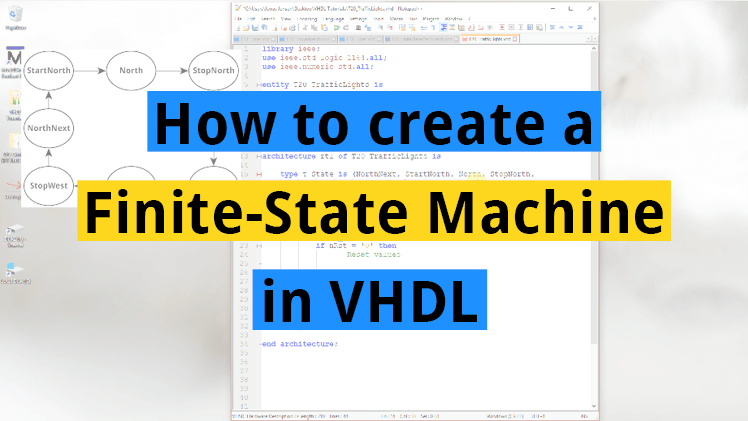
How to create a finite-state machine in VHDL
A finite-state machine (FSM) is a mechanism whose output is dependent not only on the current state of the input, but also on past input and output values. Whenever you need to create some sort of time-dependent algorithm in VHDL, or if you are faced with the problem of implementing a computer program in an…
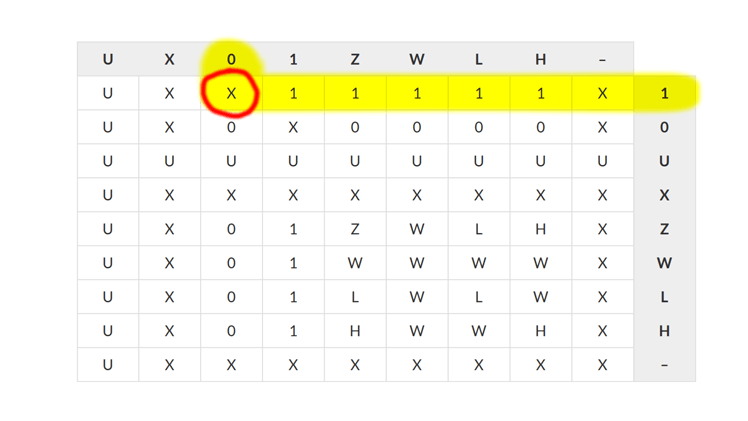
std_logic vs std_ulogic
VHDL includes few built-in types but offers several additional types through extension packages. Two of the most widely used types are std_logic and std_ulogic. The difference between them is that the former is resolved while the latter isn’t. Before we go on to investigate what it means that a type is resolved, let’s first look…
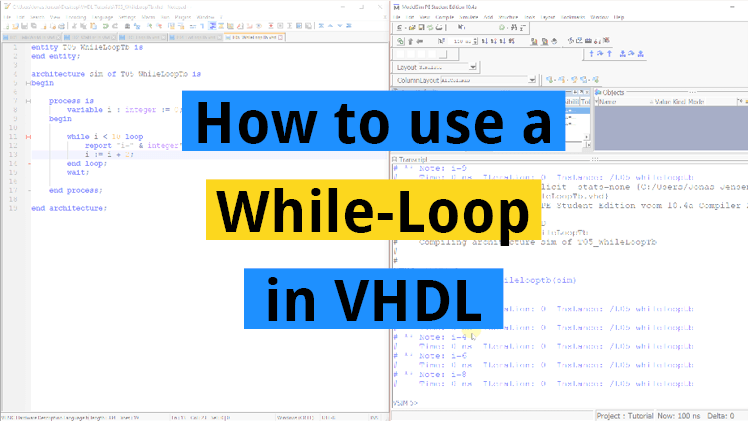
How to use a While loop in VHDL
In the previous tutorial, we learned how to use a For-Loop to iterate over an integer range. But what if we want a more detailed control of the loop than just a fixed integer range? We can use a While-Loop for this. The While-Loop will continue to iterate over the enclosed code as long as…
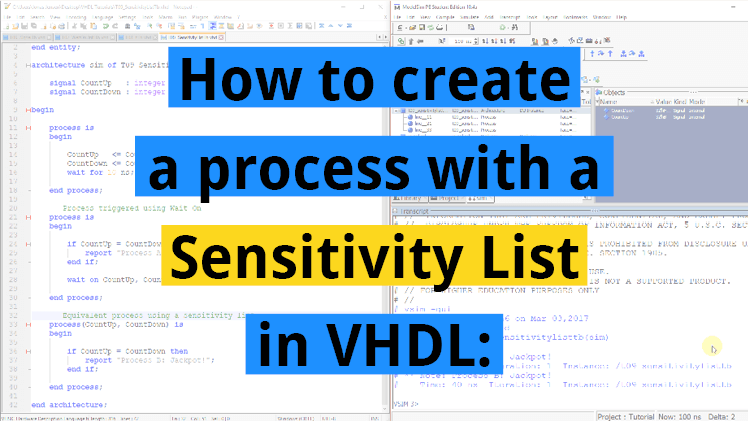
How to create a process with a sensitivity list in VHDL
You should always use a sensitivity list to trigger processes in production modules. Sensitivity lists are parameters to a process which lists all the signals that the process is sensitive to. If any of the signals change, the process will wake up, and the code within it is executed. We’ve already learned to use the…
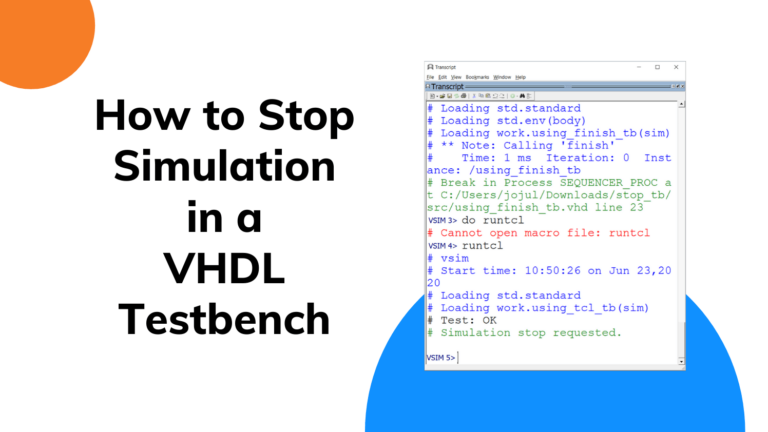
How to stop simulation in a VHDL testbench
How do you stop the VHDL simulator when the simulation is complete? There are several ways to do that. In this article, we will examine the most common ways to end a successful testbench run. The VHDL code presented here is universal, and it should work in any capable VHDL simulator. For the methods involving…
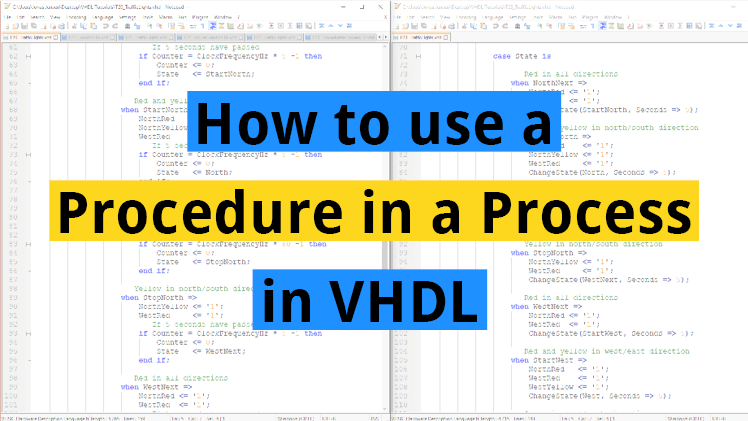
How to use a procedure in a process in VHDL
It is possible to drive external signals from a procedure. As long as the signal is within the scope of the procedure, it can be accessed for reading or writing, even if it isn’t listed in the parameter list. Procedures that are declared in the declarative region of the architecture, cannot drive any external signals….

Though those two codes are logically equivalent, the right one infers a transparent latch, it shouldn’t be used for synthesis.
I don’t think it does, but I’m not 100% sure what the synthesis tools do all the time.
This will infer a latch:
process(InSig) is begin if InSig = '0' then OutSig <= '1'; end if; end process;This shouldn’t create any latches:
process(InSig) is begin OutSig <= '0'; if InSig = '0' then OutSig <= '1'; end if; end process;A link to the question:
https://vhdlwhiz.com/wp-content/uploads/2017/09/quiz_part-2-q6.png
Hi sir, You designed this course very well and advanced. I am happy to recommend this course to my friends.
I’m glad you enjoyed it! And thanks for taking the time to leave a nice comment.